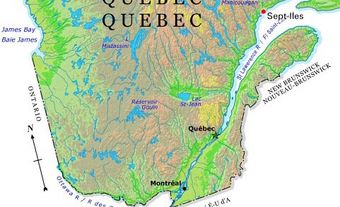
Drummondville
Drummondville, Qué, City, pop 46 599 (2001c), 44 882 (1996c), 43 171 (1991c), area 71.44 km2, inc 1875, is located on the Rivière Saint-Francois, a tributary of the St Lawrence River, in the St Lawrence Lowland, 100 km southeast of Montréal. In 1815 Major General Frederick G. Heriot installed an agricultural military camp on the site at the request of the colonial administrator, Sir Gordon Drummond, who feared an American invasion. The Abenaki called the site "the big waterway."
Originally settled by English soldiers and French settlers, it became a focal point for people because it was easy to cross the river at the foot of the falls. Potash manufacturing was the town's first economic activity. Later, the post-Confederation era brought industrialization with the development of sawmills, tanneries, forges, railways, hydroelectric plants and cement factories. In 1915, during WWI, a factory manufacturing "smokeless gunpowder" opened and transformed the town's economy. However, real development began with the establishment of the textile industry in 1918. Nowadays, the town has a large diversified industrial park, and its proximity to major roadways between Montréal, Québec City and the US has made it a favoured location for numerous trucking companies.
Le Village québécois d'antan, with some 50 historical buildings recalling life in the 19th century, and the Trent Manor (1838) are located on an indigenous site near the river. Drummond is host to Le mondial des cultures - the largest folklore festival in North America - which draws some 500 000 spectators.

 Share on Facebook
Share on Facebook Share on X
Share on X Share by Email
Share by Email Share on Google Classroom
Share on Google Classroom

